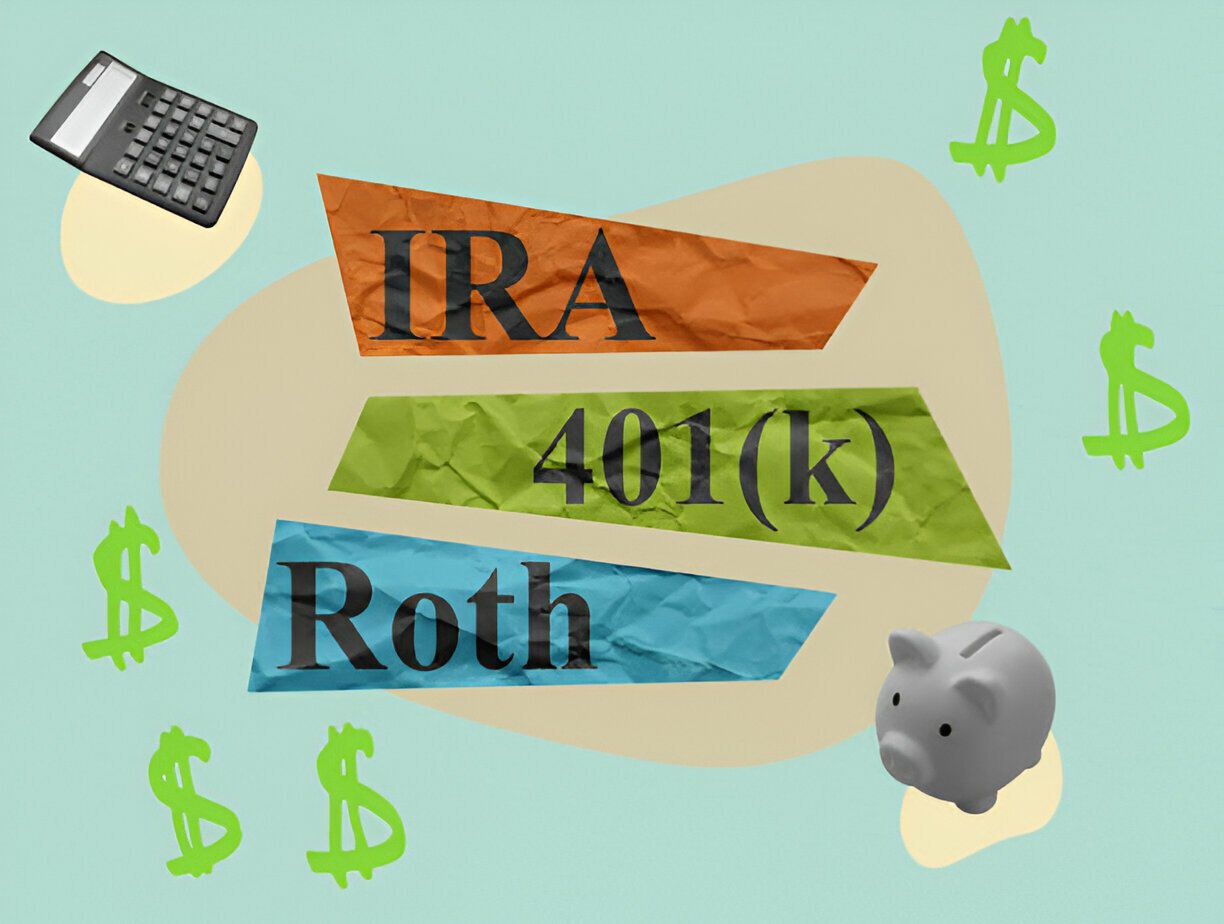Tax-Advantaged Accounts Explained: 401k, IRA, HSA, and More
Tax-advantaged accounts represent one of the most powerful yet underutilized tools in personal finance. Despite their significant benefits, many Americans leave substantial money on the table each year by not maximizing these opportunities. Understanding how these accounts work and strategically using them can literally save you tens of thousands of dollars over your lifetime. More From Mobelwealth: Our Complete Guide to How to Files Taxes in 2025
What Are Tax-Advantaged Accounts?
Tax-advantaged accounts are investment or savings vehicles that receive special tax treatment from the government. This preferential treatment comes in three primary forms: tax-deductible contributions, tax-free growth, or tax-free withdrawals. Some accounts, like the Roth IRA, even offer tax-free growth and withdrawals.
The government incentivizes these accounts because they encourage behaviors deemed beneficial to society – retirement savings, healthcare planning, and education funding. By offering tax breaks, the government essentially subsidizes your long-term financial planning. More From Mobelwealth: Filing Taxes Late This Year? Here’s What You Need to Know
The Power of Tax-Advantaged Investing
Before diving into specific account types, it’s crucial to understand the mathematical advantage these accounts provide. Consider this scenario: if you’re in the 22% tax bracket and contribute $6,000 to a traditional IRA, you immediately save $1,320 in taxes. That’s a guaranteed 22% return before your money even has a chance to grow.
According to the Employee Benefit Research Institute, workers who participate in employer-sponsored retirement plans have median account balances of $65,000, compared to just $2,500 for those who don’t participate. This stark difference highlights the real-world impact of utilizing these accounts.
401(k) Plans: The Workplace Retirement Workhorse
Traditional 401(k)
The traditional 401(k) remains the cornerstone of most Americans’ retirement planning. For 2024, employees can contribute up to $23,000, with those 50 and older eligible for an additional $7,500 catch-up contribution. These contributions are made with pre-tax dollars, reducing your current taxable income.
The real magic happens when employers offer matching contributions. The Bureau of Labor Statistics reports that 85% of workers with access to 401(k) plans receive some form of employer match, yet surprisingly, about 20% of eligible workers don’t contribute enough to receive the full match.
This represents free money left on the table. If your employer matches 50% of contributions up to 6% of salary, and you earn $60,000 annually, failing to contribute at least $3,600 costs you $1,800 in free matching funds each year. More From Mobelwealth: Beginner’s Guide to Filing Taxes in Nigeria for Small Business Owners
Roth 401(k)
The Roth 401(k) option, available in about 70% of employer plans according to the Plan Sponsor Council of America, offers a compelling alternative. While contributions don’t reduce current taxes, qualified withdrawals in retirement are completely tax-free.
The strategic decision between traditional and Roth contributions often depends on your current tax bracket versus expected retirement tax bracket. If you’re early in your career with relatively low earnings, Roth contributions may prove more advantageous. Conversely, high earners in peak earning years might benefit more from traditional contributions.
Individual Retirement Accounts (IRAs): Flexibility and Control
Traditional IRA
Traditional IRAs offer similar tax benefits to 401(k)s but with greater investment flexibility. For 2024, contribution limits are $7,000 ($8,000 for those 50+). However, tax deductibility phases out at higher income levels – starting at $73,000 for single filers and $116,000 for married couples filing jointly, according to IRS guidelines.
The key advantage of IRAs lies in investment choices. While 401(k) plans typically offer 15-25 investment options, IRAs provide access to thousands of mutual funds, ETFs, and individual stocks. This flexibility allows for more precise portfolio construction and potentially lower fees. More From Mobelwealth: 9 Things You Can Do Now To Save Money on Taxes Next Year
Roth IRA
The Roth IRA deserves special attention as perhaps the most versatile retirement account available. Contributions are made with after-tax dollars, but qualified withdrawals are tax-free. More importantly, Roth IRAs have no required minimum distributions (RMDs), making them excellent estate planning tools.
According to Federal Reserve data, only 24% of families own Roth IRAs, despite their significant advantages. This underutilization stems partly from income limits – for 2024, eligibility phases out starting at $138,000 for single filers and $218,000 for married couples.
However, high earners can still access Roth benefits through the “backdoor Roth” strategy, contributing to a non-deductible traditional IRA and immediately converting to Roth. This technique has gained popularity as tax rates have remained relatively stable.
Health Savings Accounts (HSAs): The Triple Tax Advantage
HSAs represent the most tax-advantaged accounts available, offering what financial experts call the “triple tax advantage.” Contributions are tax-deductible, growth is tax-free, and withdrawals for qualified medical expenses are tax-free.
For 2024, HSA contribution limits are $4,150 for individuals and $8,300 for families, with an additional $1,000 catch-up contribution for those 55 and older. The Employee Benefit Research Institute reports that the average HSA account balance is $3,050, but many users don’t maximize the long-term potential.
HSA Strategy Beyond Healthcare
The most sophisticated HSA strategy involves paying current medical expenses out-of-pocket and investing HSA funds for long-term growth. After age 65, HSA funds can be withdrawn for any purpose (similar to traditional IRA rules), making them effective retirement accounts with superior tax treatment.
Consider this: a 30-year-old contributing $4,150 annually to an HSA earning 7% annually would accumulate over $900,000 by age 65. If withdrawn tax-free for medical expenses, this provides substantial healthcare security in retirement. More From Mobelwealth: Best Texas unemployment benefits Strategies That Actually…
Additional Tax-Advantaged Accounts
529 Education Savings Plans
529 plans offer tax-free growth and withdrawals for qualified education expenses. According to the College Savings Plans Network, total 529 plan assets exceed $480 billion, with average account balances of $27,741.
The recent expansion of 529 usage to include K-12 tuition (up to $10,000 annually) and apprenticeship programs has increased their versatility. Additionally, the SECURE Act 2.0 allows unused 529 funds to be rolled to Roth IRAs under certain conditions, eliminating the primary concern about overfunding these accounts.
Flexible Spending Accounts (FSAs)
FSAs offer immediate tax savings for predictable medical expenses. The 2024 contribution limit is $3,200, with a $640 carryover allowance. While less flexible than HSAs, FSAs can be valuable for those with regular medical expenses who don’t have HSA access.
Strategic Account Prioritization
Given limited resources, strategic account prioritization becomes crucial. The optimal sequence typically follows this hierarchy:
First Priority: Contribute enough to your 401(k) to receive the full employer match. This provides an immediate guaranteed return equal to the match percentage.
Second Priority: Maximize HSA contributions if available. The triple tax advantage and flexibility make HSAs extremely valuable.
Third Priority: Consider Roth IRA contributions, especially if you’re in a lower tax bracket than expected in retirement.
Fourth Priority: Return to maximize 401(k) contributions, choosing between traditional and Roth based on your tax situation.
Fifth Priority: Explore additional accounts like 529 plans or taxable investment accounts.
Common Mistakes to Avoid
Mistake 1: Not Contributing Enough for Full Employer Match
The Federal Reserve’s 2022 Survey of Consumer Finances reveals that many workers forfeit billions in employer matching contributions annually. This represents an immediate 50-100% return on investment that’s impossible to replicate elsewhere.
Mistake 2: Ignoring Account Fees
High fees can devastate long-term returns. A 1% difference in annual fees on a $100,000 account costs over $28,000 over 20 years, assuming 7% annual returns. Research from Morningstar consistently shows that lower-cost investments outperform higher-cost alternatives over time.
Mistake 3: Poor Asset Allocation
Many investors either invest too conservatively or take excessive risks. The Employee Benefit Research Institute found that 401(k) participants in their 20s often hold too much in stable value funds, while older participants sometimes maintain aggressive allocations inappropriate for their time horizon.
Tax Implications and Withdrawal Strategies
Understanding withdrawal rules prevents costly mistakes. Traditional retirement accounts generally penalize withdrawals before age 59½ with a 10% penalty plus ordinary income taxes. However, several exceptions exist, including first-time home purchases, higher education expenses, and medical costs.
Roth accounts offer more flexibility, allowing contribution withdrawals at any time without penalty. However, earnings withdrawals before age 59½ may trigger penalties unless specific conditions are met.
Required minimum distributions (RMDs) begin at age 73 for traditional retirement accounts. The IRS RMD tables determine minimum withdrawal amounts based on life expectancy and account balances.
The Impact of Starting Early
The mathematics of compound growth make early contributions exponentially more valuable. Consider two investors: Sarah begins contributing $6,000 annually to a Roth IRA at age 25 and stops at 35 (total contributions: $60,000). Mike starts at 35 and contributes $6,000 annually until 65 (total contributions: $180,000). Assuming 7% annual returns, Sarah’s account grows to $1.37 million by age 65, while Mike’s reaches $674,000.
This example illustrates why starting early, even with smaller amounts, often proves more effective than waiting and contributing larger sums later.
Frequently Asked Questions
Can I contribute to both a 401(k) and IRA in the same year?
Yes, you can contribute to both accounts in the same year. However, IRA deductibility may be limited if you participate in an employer plan and exceed certain income thresholds. For 2024, the phase-out ranges are $73,000-$83,000 for single filers and $116,000-$136,000 for married couples filing jointly.
What happens to my 401(k) if I change jobs?
You have several options: leave the funds in your former employer’s plan, roll them to your new employer’s plan, roll them to an IRA, or cash out (not recommended due to taxes and penalties). Rolling to an IRA often provides the most investment options and flexibility.
Can I use my HSA for non-medical expenses?
Yes, but withdrawals for non-medical expenses before age 65 incur a 20% penalty plus ordinary income taxes. After age 65, non-medical withdrawals are taxed as ordinary income but don’t incur penalties, making HSAs function like traditional IRAs.
Should I choose traditional or Roth contributions?
The decision depends on your current tax bracket versus expected retirement tax bracket. If you expect to be in a lower tax bracket in retirement, traditional contributions may be preferable. If you expect higher tax rates in retirement, Roth contributions might be better. Many financial advisors recommend tax diversification using both account types.
What’s the deadline for IRA contributions?
IRA contributions for a given tax year can be made until the tax filing deadline (typically April 15) of the following year. This extended deadline allows for tax planning flexibility and the ability to contribute after receiving tax documents.
Can I withdraw Roth IRA contributions penalty-free?
Yes, Roth IRA contributions (but not earnings) can be withdrawn at any time without taxes or penalties since they were made with after-tax dollars. However, earnings withdrawals before age 59½ may trigger penalties unless specific exceptions apply.
How do I choose investments within my retirement accounts?
Investment selection should align with your risk tolerance, time horizon, and overall financial goals. Many experts recommend low-cost, diversified index funds as core holdings. Target-date funds can provide automatic rebalancing and age-appropriate asset allocation for hands-off investors.
What happens to unused 529 funds?
Recent legislation allows unused 529 funds to be rolled to Roth IRAs under certain conditions, including a 15-year account seasoning period and annual rollover limits. Alternatively, funds can be transferred to other family members or used for expanded qualified expenses.
Conclusion
Tax-advantaged accounts represent one of the most powerful wealth-building tools available to individual investors. By understanding the unique benefits and strategic applications of each account type, you can potentially save thousands in taxes while building substantial long-term wealth.
The key lies in starting early, maximizing employer matches, and strategically utilizing the various account types based on your personal financial situation. While the rules and limits may seem complex initially, the long-term benefits of mastering these accounts far outweigh the initial learning curve.
Remember that tax laws and contribution limits change regularly, so staying informed and adjusting your strategy accordingly remains essential. Consider consulting with a qualified financial advisor or tax professional to ensure your approach aligns with your specific circumstances and goals.
The path to financial independence isn’t just about earning more money – it’s about keeping more of what you earn through smart tax planning and strategic use of these powerful financial tools.
















Loading comments...
Leave a Comment(Login required)